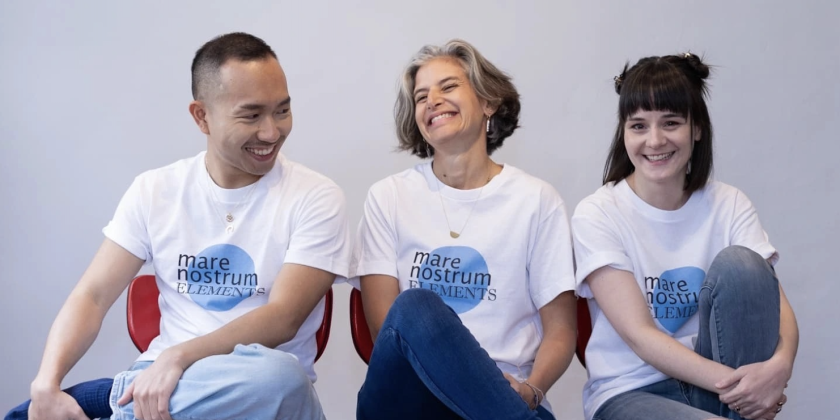AUDIENCE REVIEW: Cora Dance presents "Gifts"

Company:
Shannon Hummel/Cora Dance
Performance Date:
11/22/19
Freeform Review:
The dystopian fantasy that is Shannon Hummel’s “Gifts” is even better the second time around (originally performed in January, the new installation took place in November 2019). The new incarnation—each performance for an audience of no more than 10—like the original, takes place inside a storage container in Red Hook’s Treasure Island Storage. But this one is even smaller; the potential claustrophobia scale higher. You feel everyone’s breath in the chill air.
Deliberate, contemplative, repeated actions make up the life of (perhaps) sisters, (perhaps) captives living in Unit #5109, though whether by choice, by survival, or by force is unclear, and unimportant. Dressed identically in pale blue robes with hakama-styled legs, the characters “day”—danced by Katie Dean and Kelsey Kramer —consists of rituals.
Pale blue “space-age” meals—Necco wafers and plastic wrapped cups of pale blue waterin blue, plastic hospital food trays—are eaten in unison. The characters race for whom can crunch harder, but not faster, while holding hands. Ceremonial circumnavigations of the container fill more time—run your hand down a corrugation, walk quickly besides a wall running fingers over the corrugations, “whump, whump, whump…” fall, your whole weight against the side making a big noise—the dancers costumes brush audience’s skin and hair as they slam the walls over our heads. We feel their boredom, their dutifulness to routine, the seeming never-endingness of it all.
Dean and Kramer never break their absoluteness of task; without this precision none of it works.
In the first version I was particularly aware of the delicate beauty of Hans Bilger’s score. Repeatedly Bilger uses the sounds of the set’s objects weaving them into a score that is background and yet drives the performance. In the smaller space of the recent production the drama of slowly dripping water, squeezed from thick, blue, cleaning wipes into the plastic, hospital food trays, is both mesmerizing, and annoying—it’s meant to be. Crinkling cellophane wrappers from the tray’s contents sounds like dry leaves. Later this sound comforts the characters, but it is also an anxious rattle. The sound is strikingly present, yet never undermines the quietness of the performance.
Until…Ritually preparing for bed, sleeping head to toe, Dean lies rigidly flat. Kramer, less burdened, flings herself lying not on her folded garment, but on her companion’s legs.
Then, reminding me of Maurice Sendak’s Where the Wild Things Are, a long chain of what we imagine are years of used thick, blue wipes and cellophane wrappers tied by mysterious forces, suddenly appears over the wall of the character’s containment.
In a beautiful solo that contains both the wonder of childhood and the escape of the mind when the body is held, Dean, in what may be a dream, but may not be, enters a primordial forest constructed from the blue chain and a ladder. With twists and twirls, hiding, and dreamily looking up—an innocent playing in a made up world, Dean delicately creates the freedom and beauty she does not have in the container until, shoulders set as if to an unwanted task, and with some hostility, she returns to the norm.
Not so Kramer. Waking to her breakfast Necco wafer she rebels pours her water on the floor. In a solo reminiscent of a slip-and-slide Kramer grows more and more bold, her movement pure joy, she let’s go. And in so doing she is no longer willing to stay.
Boldly, testing the waters, Kramer opens the rolling gate—the container door and walks away. Dean, hesitantly, goes after her. But only after a last look, a finger rubbed along the doorway. Recalling the rustle of cellophane, Bilger now gives us a sound of freedom. We hear leaves crunch and the lights go out.
In the tiny space the audience is more than voyeur, we are pulled into their world, onlookers through a peephole. Fascinated by the rigid routine, the endlessness, we root for their play, for their imaginations to run free, for them to befree. And we ask—what if?
Author:
Carrie Stern
Photo Credit:
Steve Pisano











